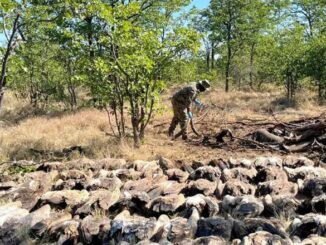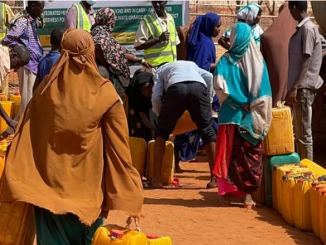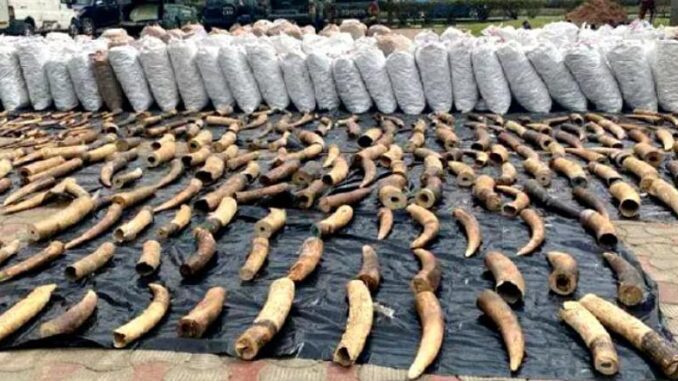
By Don Pinnock
CAPE TOWN, South Africa, May 19, 2025 (ENS) – A new investigative report has laid bare the scale and complexity of wildlife trafficking across southern Africa, exposing a tangled web of corruption, organized crime and systemic failures that are eroding conservation efforts and fueling illicit markets.
“Disruption and Disarray: An analysis of pangolin scale and ivory trafficking, 2015-2024,” the new report by the Wildlife Justice Commission, is one of the most comprehensive examinations to date of how legal loopholes, political interference and institutional weakness have allowed the illegal trade in endangered species to flourish.
The numbers beggar belief. There are big pangolins and small pangolins – eight species in all. Averaging out, a single pangolin carries between 500 and 600 grams of protective scales. To make up a tonne requires the slaughter of more than 1,800 pangolins.
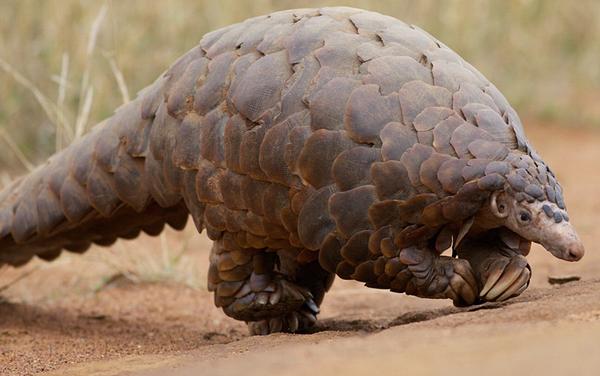
In 2019 alone global seizure of pangolin scales was more than 100,000 tonnes. That’s one year. The report estimates that seizures equal only 10 percent of totals trafficked. We are talking about millions of dead pangolins.
In darkened shipping containers, concealed under layers of timber or hidden within sacks of cashew nuts, the scales of trafficked pangolins and the tusks from butchered elephants crossed oceans, driven by relentless demand.
The report paints a complex picture of wildlife trafficking from Africa to Asia between 2015 and 2024 – before and after the Covid-19 pandemic.
Pangolins gained unfortunate notoriety as one of the most heavily trafficked wild mammals in the world when illegal trade in their scales became a global issue about 10 years ago. There are eight recognized species of pangolin, four found in Asia and four in Africa.
During the 2010s vast quantities of African pangolin scales began to be smuggled to service a booming demand in Asia. In 2019, two record-breaking pangolin scale shipments were seized just days apart in Singapore, totalling more than 25 tonnes, while three record-breaking ivory seizures were made in Vietnam, Singapore and China, also amounting to more than 25 tonnes.
Rapid growth in the average shipment size pointed to the involvement of organized crime networks operating at an industrial scale with significant financial capital, business infrastructure and corrupt connections to move large shipments across continents with such frequency.
At the same time, 2019 also saw one of the largest volumes of elephant ivory yet seized from illegal trade, reported to be about 50 metric tonnes.
This century poaching has reduced the global elephant population by about 30 percent. Between 2015 and 2024, says the report, more than 193 tonnes of elephant ivory were seized, representing 19,300 elephants. If that equals 10 percent, the total number of dead elephants would be 193,000, nearly half of Africa’s total population.
China’s own crackdown on wildlife trafficking intensified during the pandemic. In 2020, Chinese authorities made several high-profile arrests and introduced tougher penalties for wildlife crimes, particularly for species implicated in zoonotic disease transmission. This contributed to a decline in major ivory and pangolin scale seizures within China itself.
The total $176.1-million in estimated lost revenue over the decade hints at how much profit the criminal networks must have been generating from successful imports and sales to buyers for it to be worth the risk and continue to be an attractive business venture.
Although it is not known what proportion of actual illegal trade is represented by seizures, if a seizure rate of 10 percent is assumed, then the revenue generated from successful shipments across the 10 years could potentially be as high as $1.58-billion.
Criminal networks
During recent years, the Wildlife Justice Commission has found that African facilitators and brokers play critical roles in both the Vietnamese and Chinese criminal networks operating in Africa. These roles often extend beyond sourcing products to include organizing travel and corrupt connections at seaports and airports, selecting and procuring the cover loads and managing the storage, transport and packing of shipments.
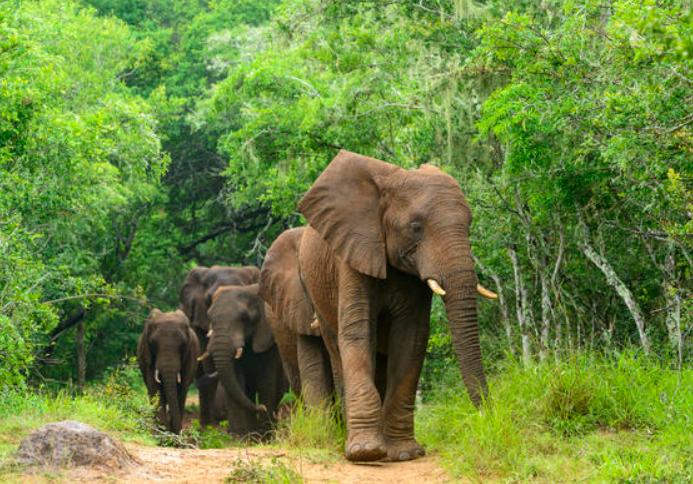
Vietnamese criminal networks appear to be made up of a core group of Vietnamese citizens centered on one or two principals and trusted local associates – often relative – in the countries in which they conduct their business.
The principal usually has the most experience and best connections to brokers in Africa, buyers in Asia and logistics contacts at both ends of the supply chain.
Chinese wildlife crime networks have been found to display structural and operational characteristics typical of sophisticated organized crime groups. Networks appear to be structured as a collection of hierarchically arranged members with a centralized authority.
Each network member is devoted to a particular function such as financing, sourcing, logistics and money movement. These roles are often formally defined, and continuity of network membership is evident across several years of operation.
Wildlife Justice Commission investigations have identified a high level of connectivity across Nigerian criminal networks involved in the supply and trade of pangolin scales and ivory. There are fluid, informal and temporary associations between Nigerian traders, as opposed to the longer-term relationships and structures of more traditional organized crime networks.
Collaboration between traders is believed to occur on an opportunistic basis, such as drawing on and sharing each other’s supply and logistics contacts. While a strict hierarchical structure has not been observed, all criminal networks investigated by the WJC appear to have a principal, generally the person in the group with the most experience and best connections to both customers in Asia and logistics contacts in Nigeria.
Law Enforcement Efforts
While the pandemic generated the initial shock that almost completely halted trafficking movements for a short period, proactive and targeted law enforcement efforts have also contributed to fundamental change in the global wildlife crime landscape.
Pivotal arrests and prosecutions of high-level traffickers have occurred in several countries along the supply chains during the period of this analysis, including Vietnam, Malaysia and Mozambique.
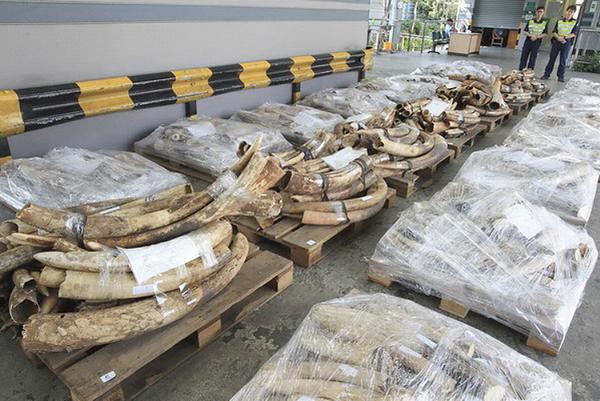
Law enforcement efforts in China have been integral in this scenario. Since its elephant ivory trade ban came into force in December 2017, supported by a sophisticated and methodical investigative approach, China has taken out entire criminal networks involved in ivory trafficking.
This has included top-down and multigenerational targeting within the networks, repatriating Chinese citizens from Africa to China to face prosecution for their crimes, as well as convicting foreign citizens committing crimes in China.
It is also one of the few countries known to be applying asset forfeiture orders against high-level wildlife traffickers, which is a powerful tool to deprive criminals of the proceeds of crime.
Reforms in the criminal justice system have given higher priority to environmental crimes, including establishing more than 2,000 specialized environmental courts and trial organizations and introducing specialized teams of prosecutors to handle environmental cases.
These cases have delivered an almost 100 percent conviction rate and heavy sentencing which seeks to address the higher tier of organized crime.
The Good News
In the post-pandemic period, pangolin scale and ivory trafficking both appear to have stabilised at relatively low levels and have shown consistency in trends since 2022. A substantial decrease in multi-tonne seizures and the decline in pangolin scale and ivory values all signal a significant slowing down in the trafficking of both commodities since Covid-19.
The rise in large, land-based stockpile seizures in Africa, however, points to continued demand but also backlogs in orders. Together, these findings could indicate a higher arrest risk or weakened capacity of organized crime networks to move shipments out of Africa.
This provides a glimmer of hope in the outlook for pangolins and elephants. A slowing down in the cross-continental trafficking of their scales and tusks may bring some reprieve for these species. If it can be sustained, there could be a chance for recovery for these heavily trafficked animals.
Featured image: Bags of pangolin scales stand beside elephant ivory tusks after a wildlife trafficking bust in Nigeria. 2024 (Photo courtesy Wildlife Justice Commission)
© 2025, Environment News Service. All rights reserved. Content may be quoted only with proper attribution and a direct link to the original article. Full reproduction is prohibited.


